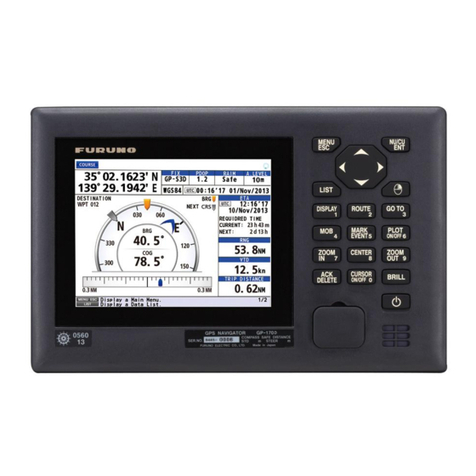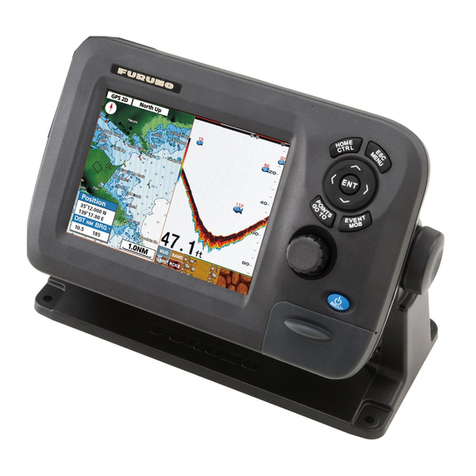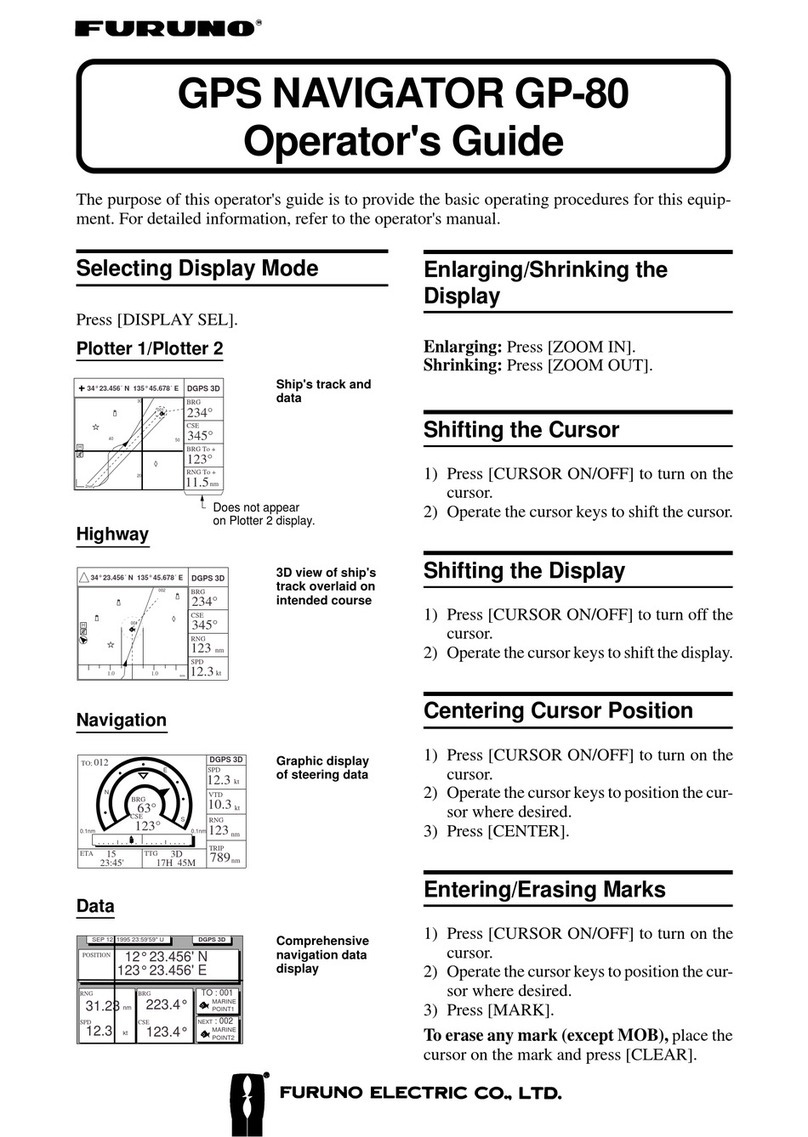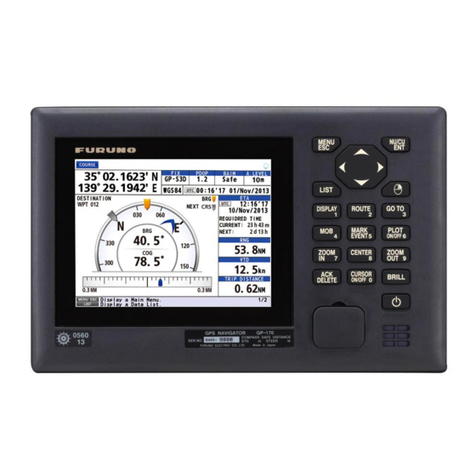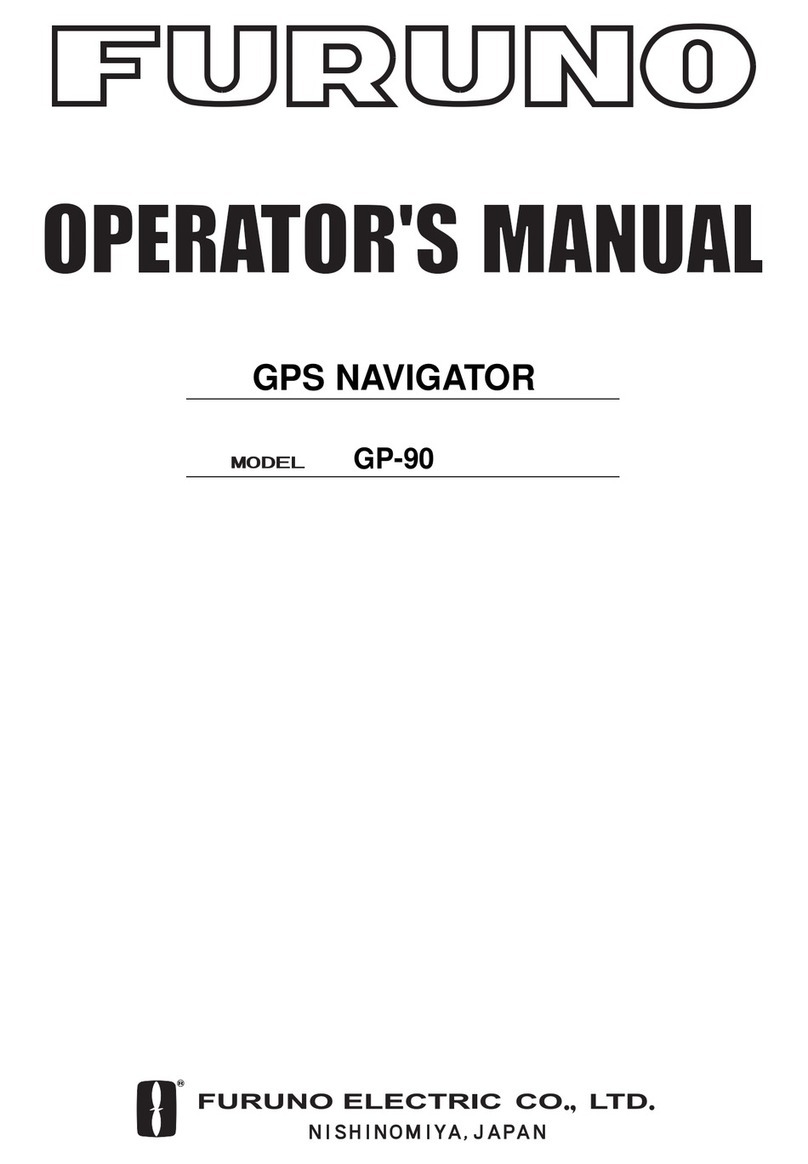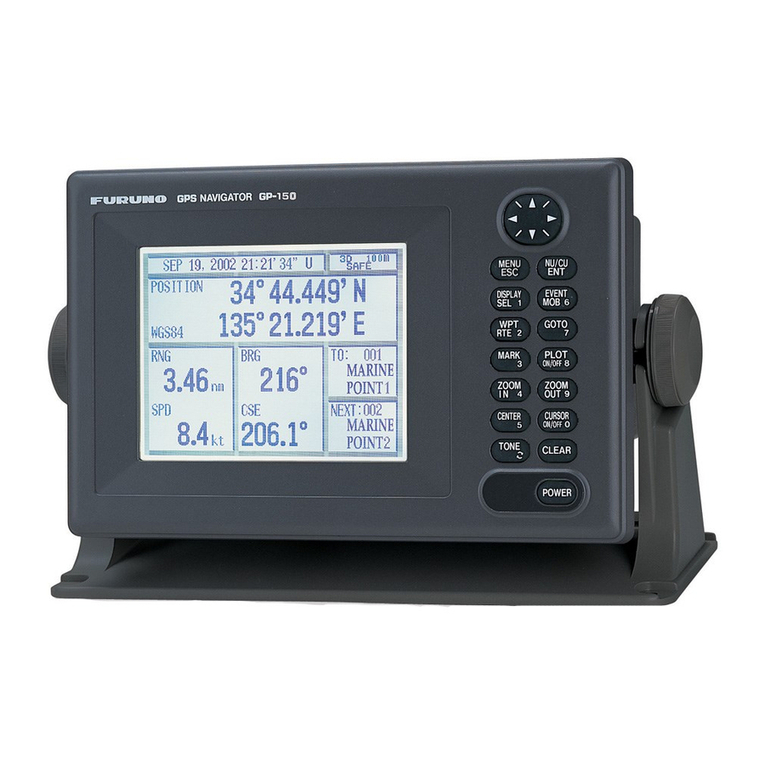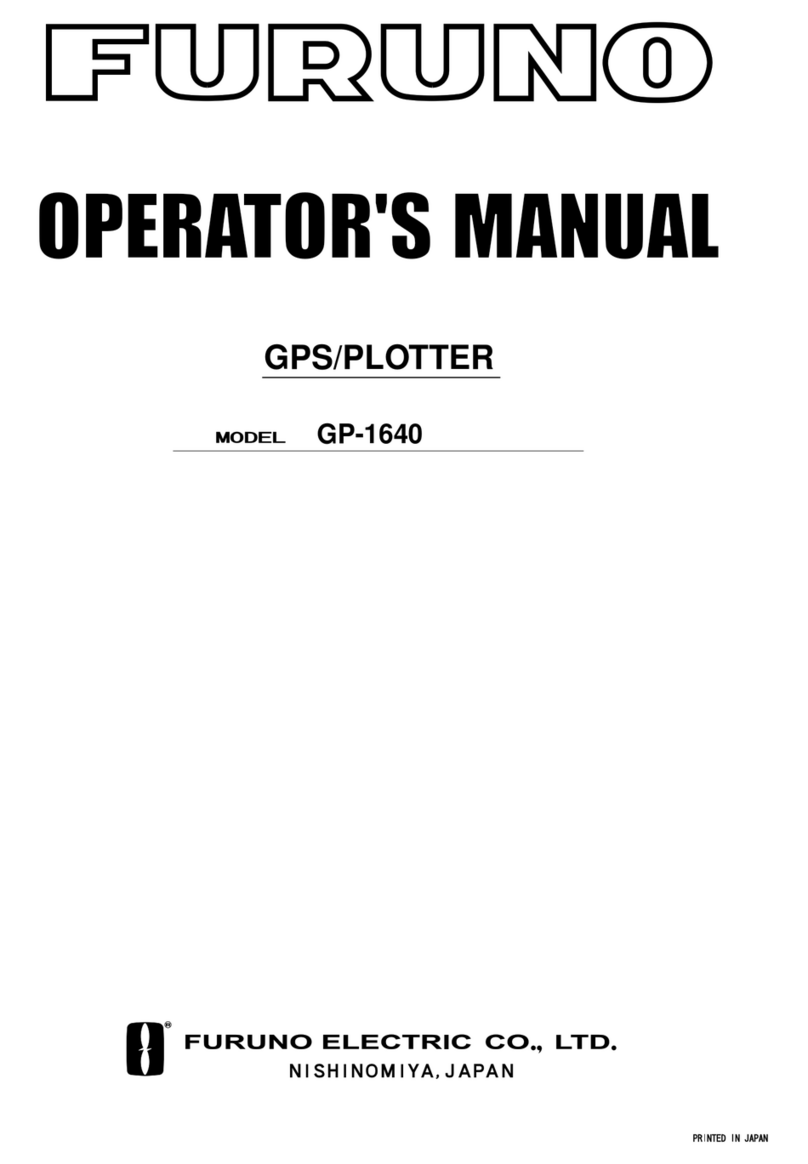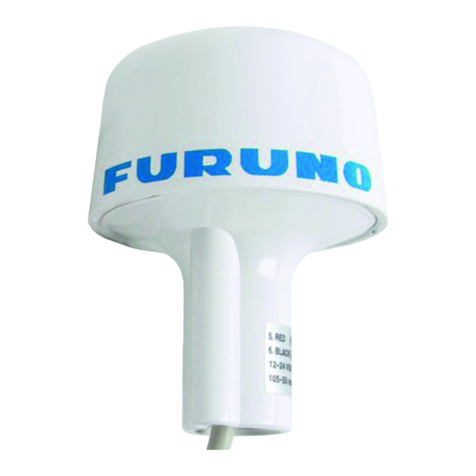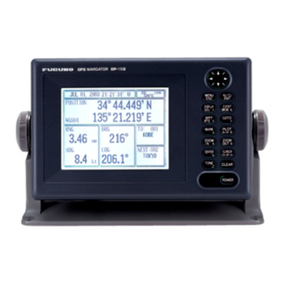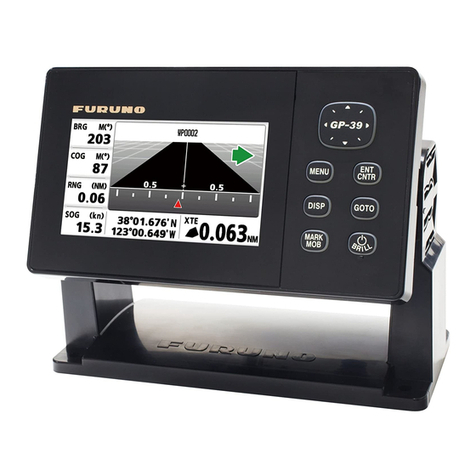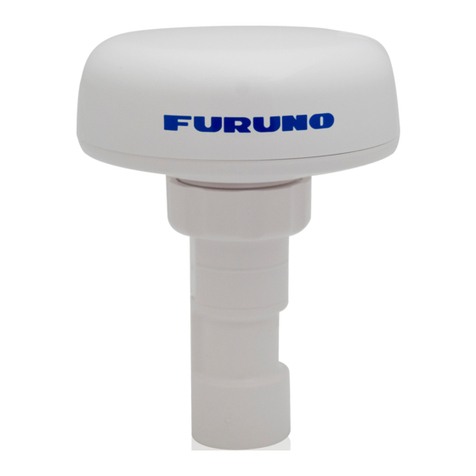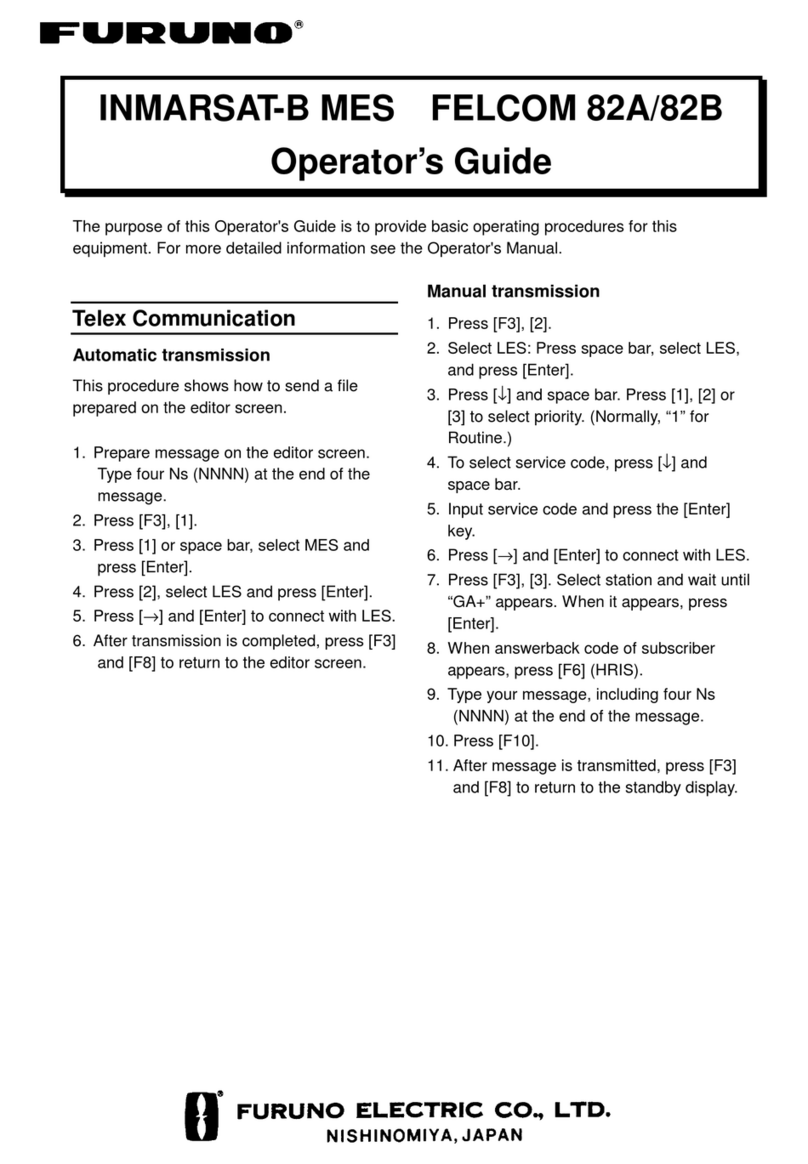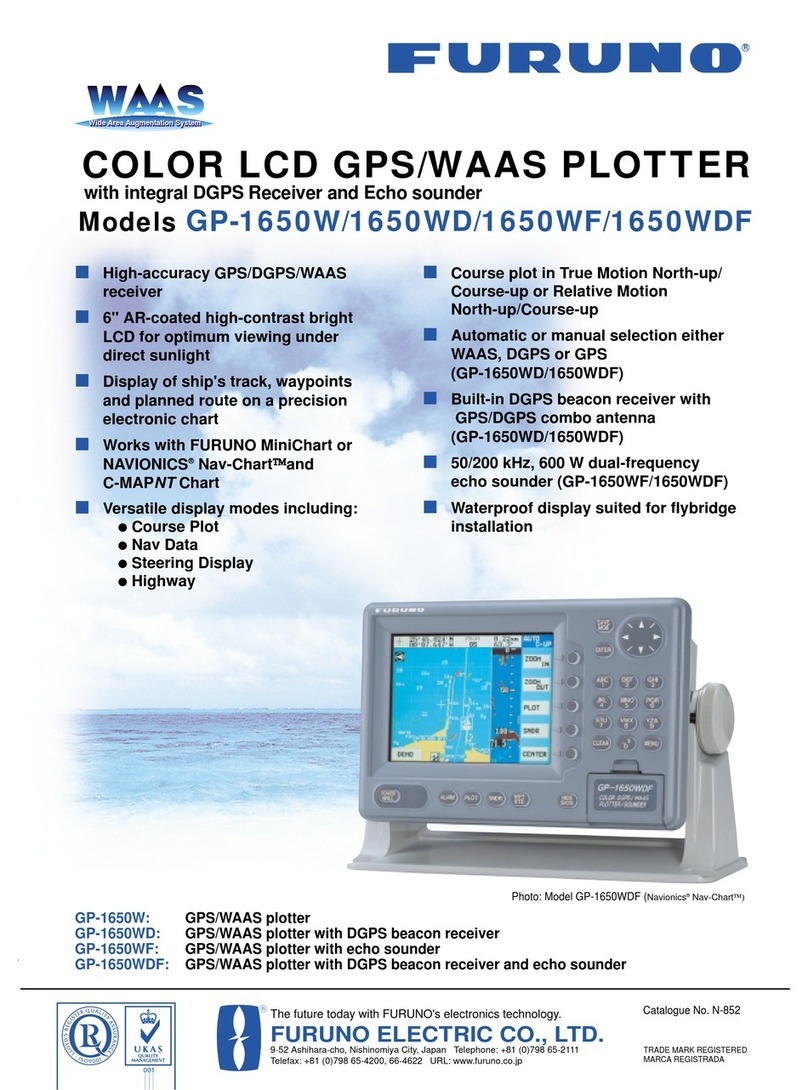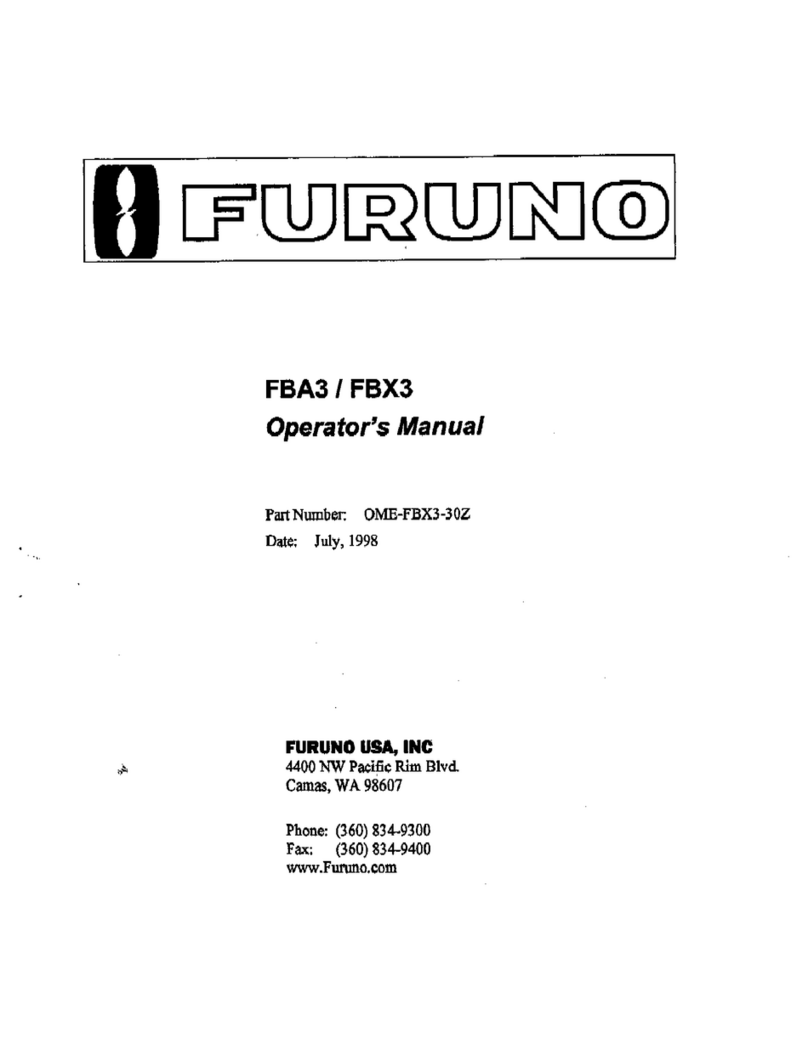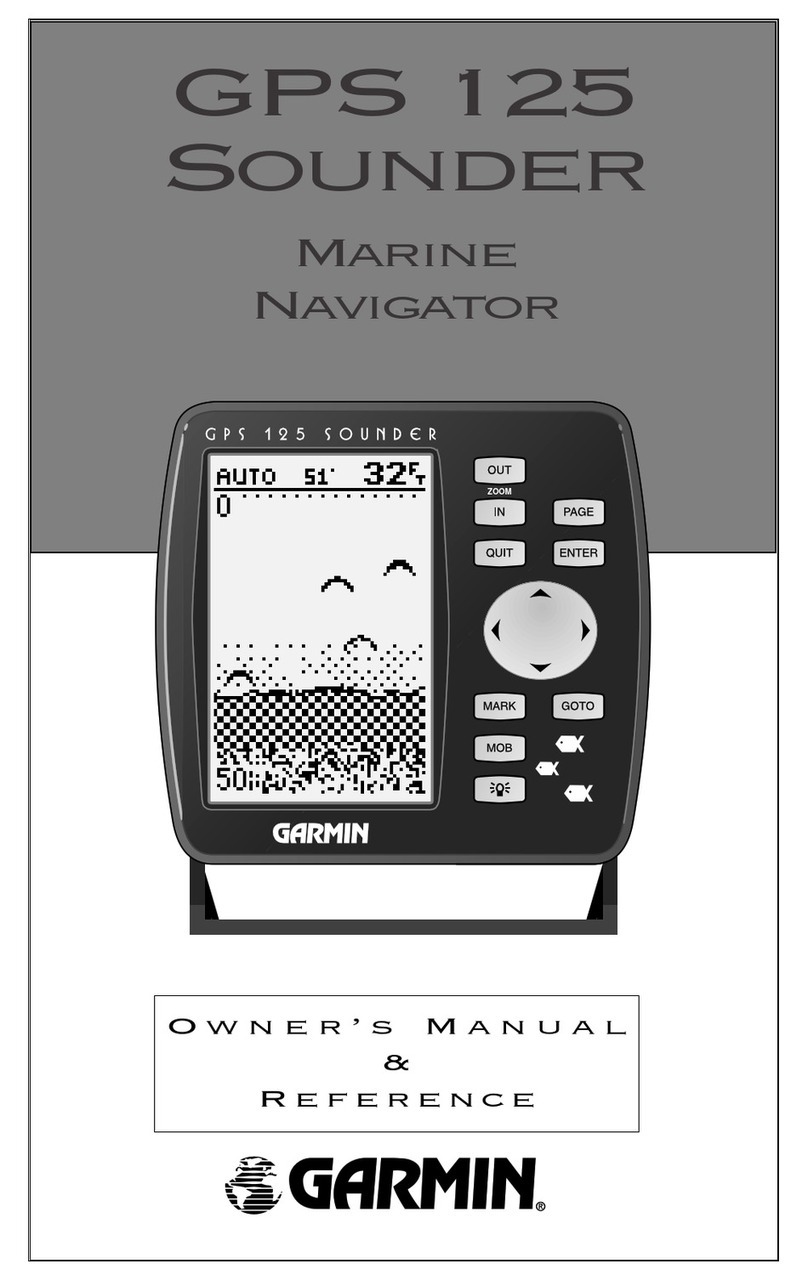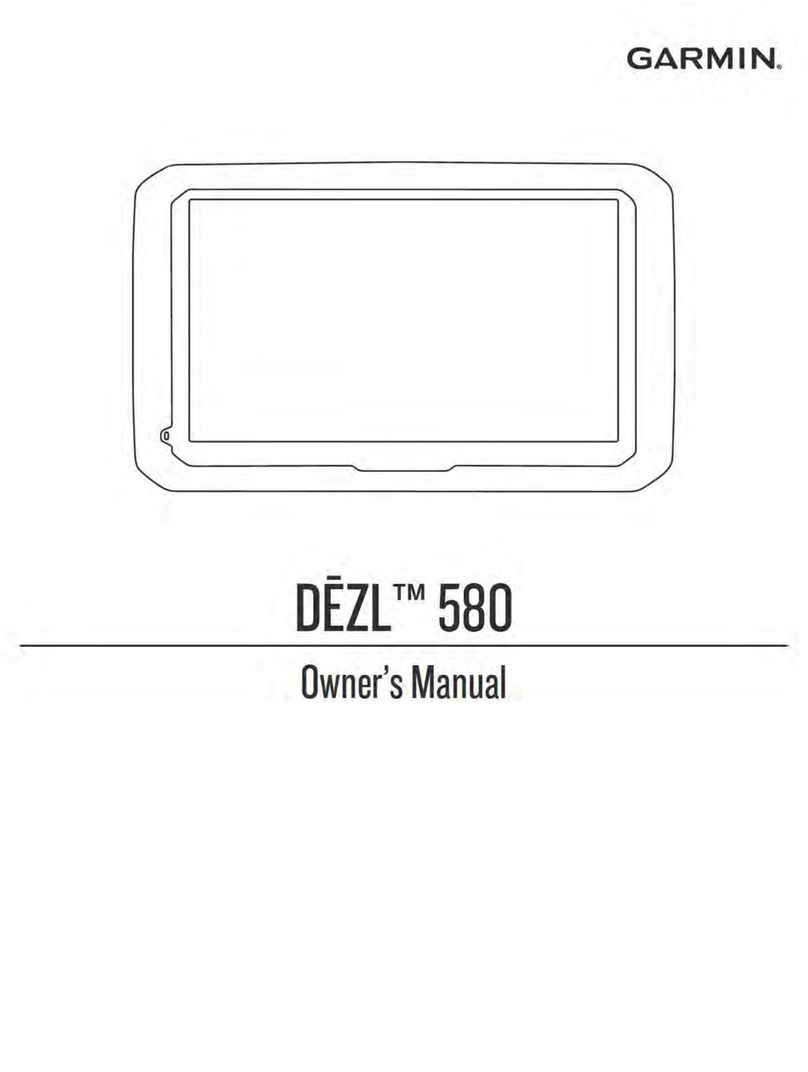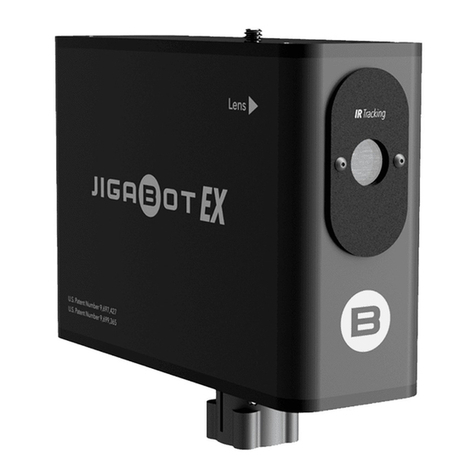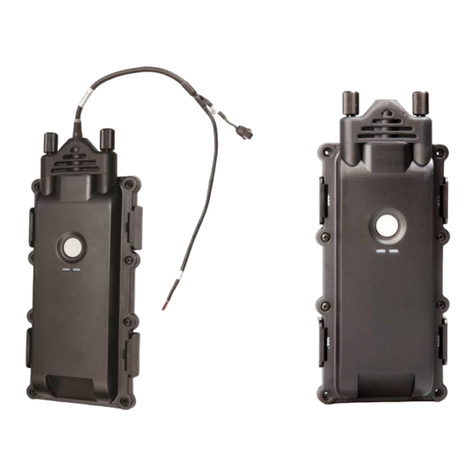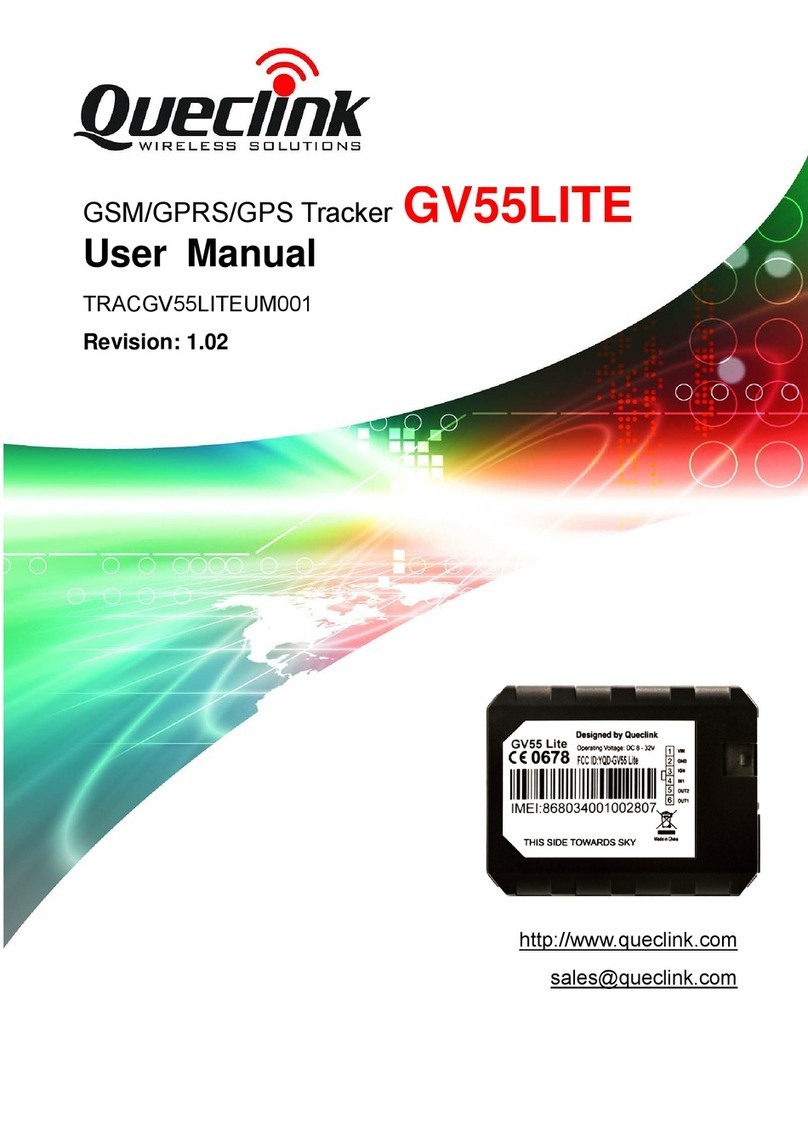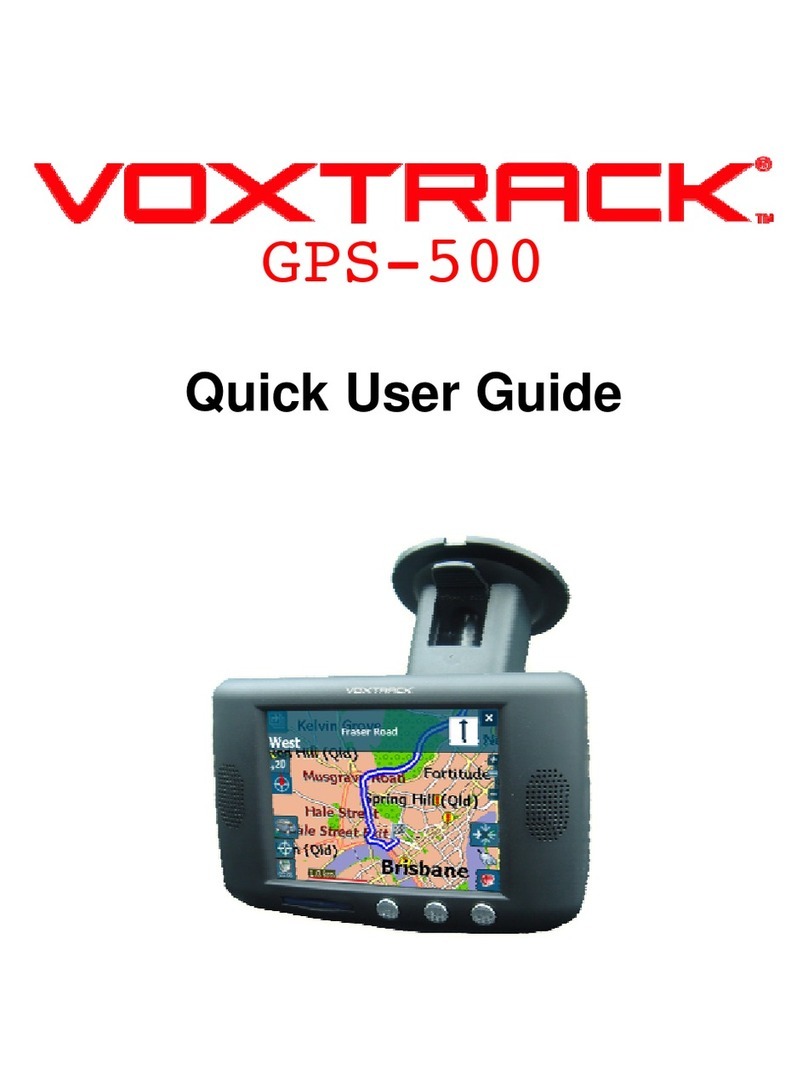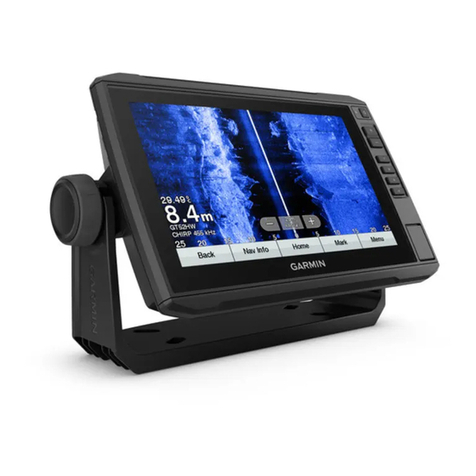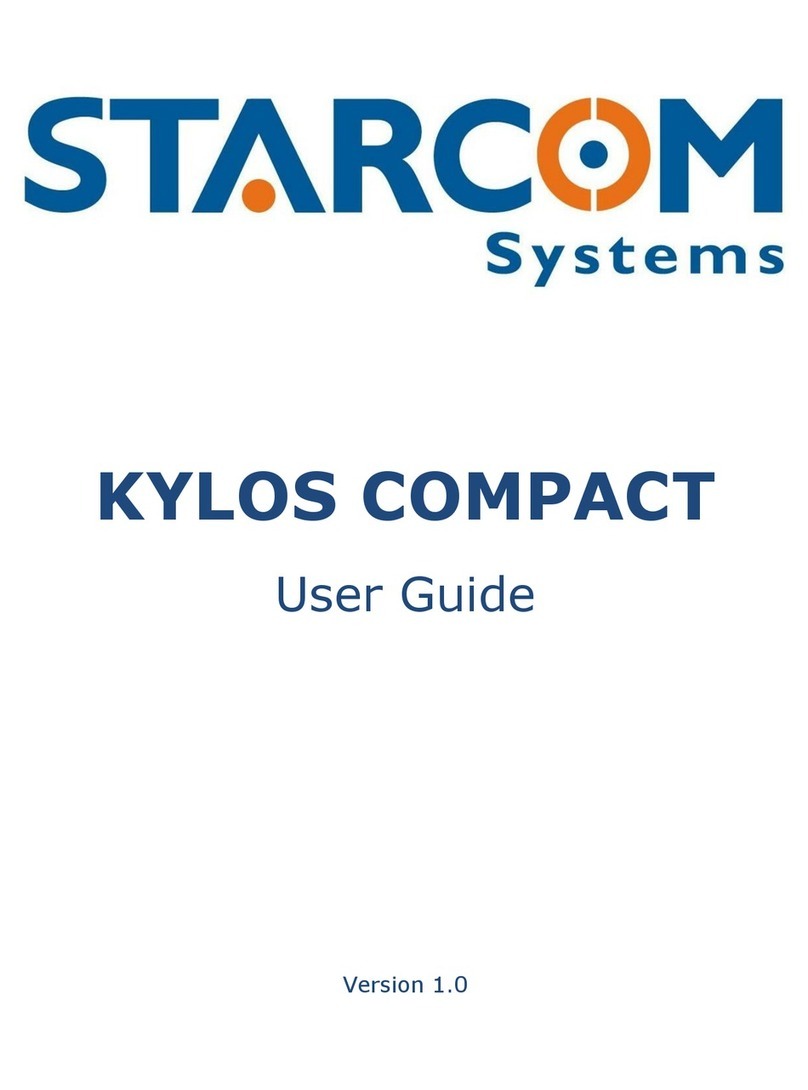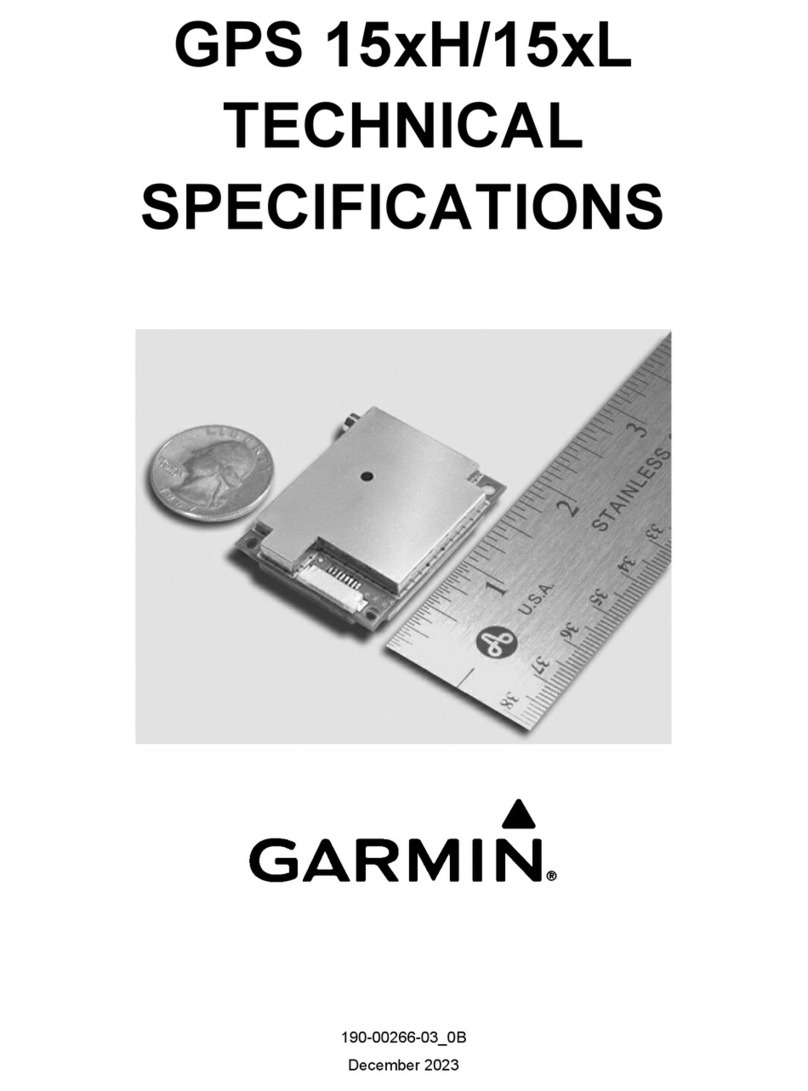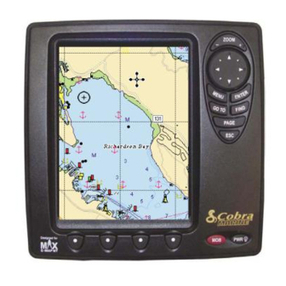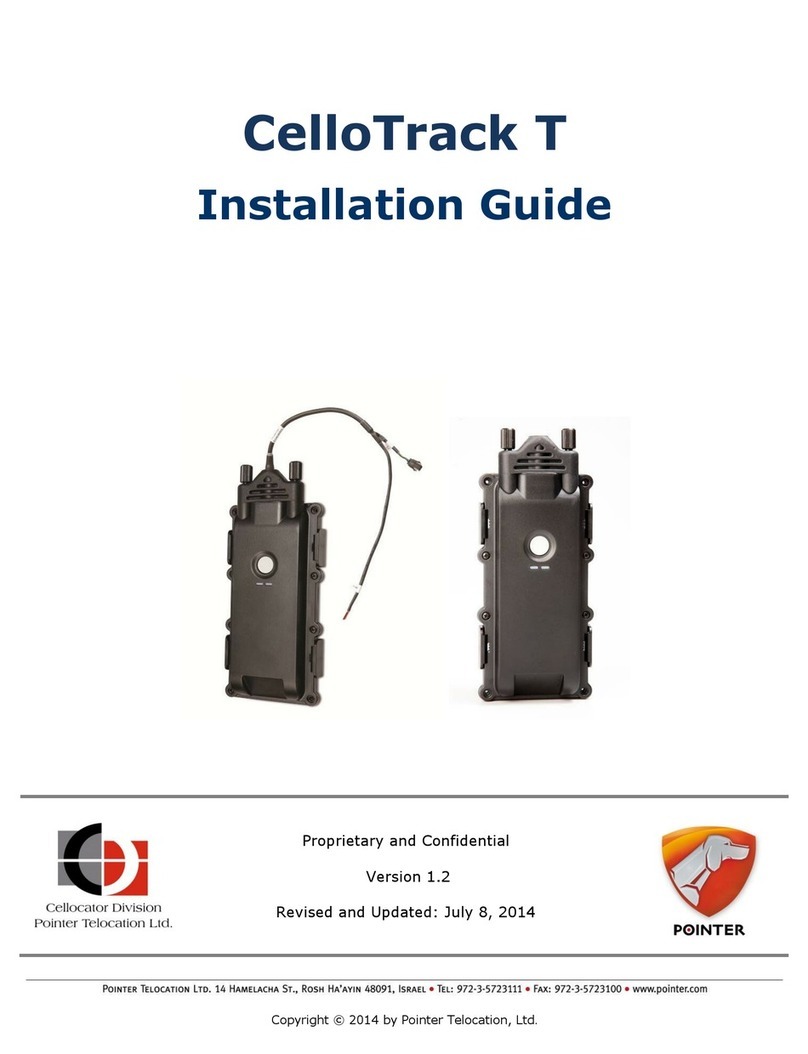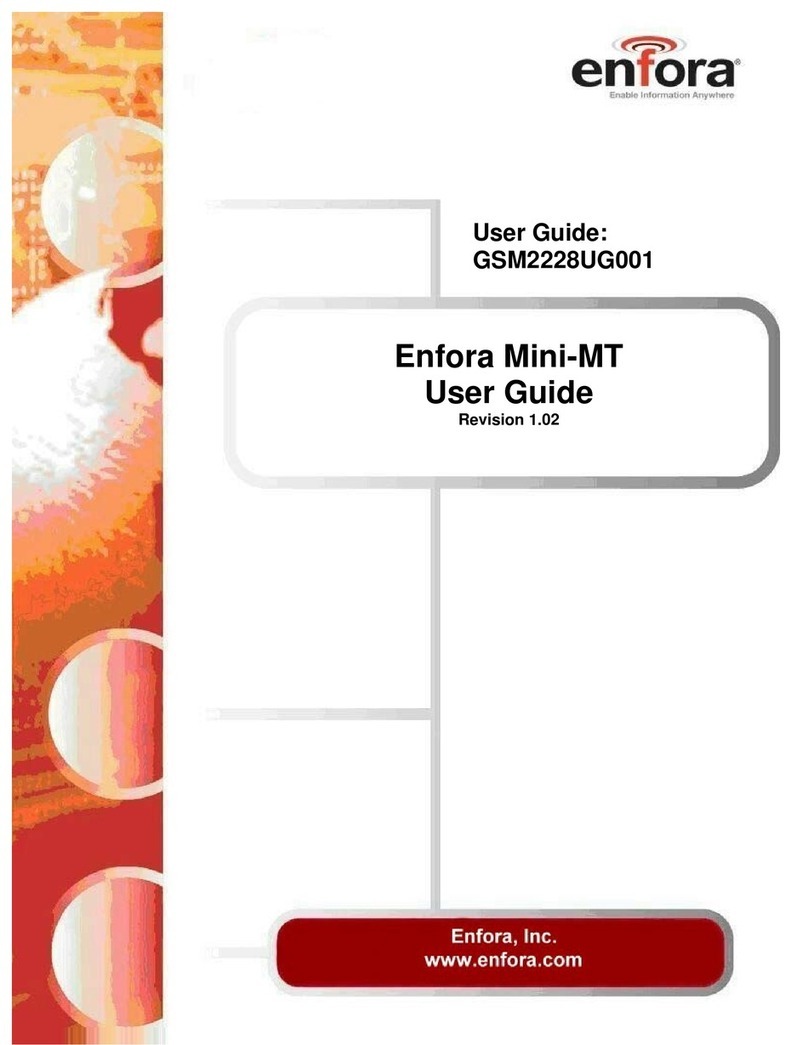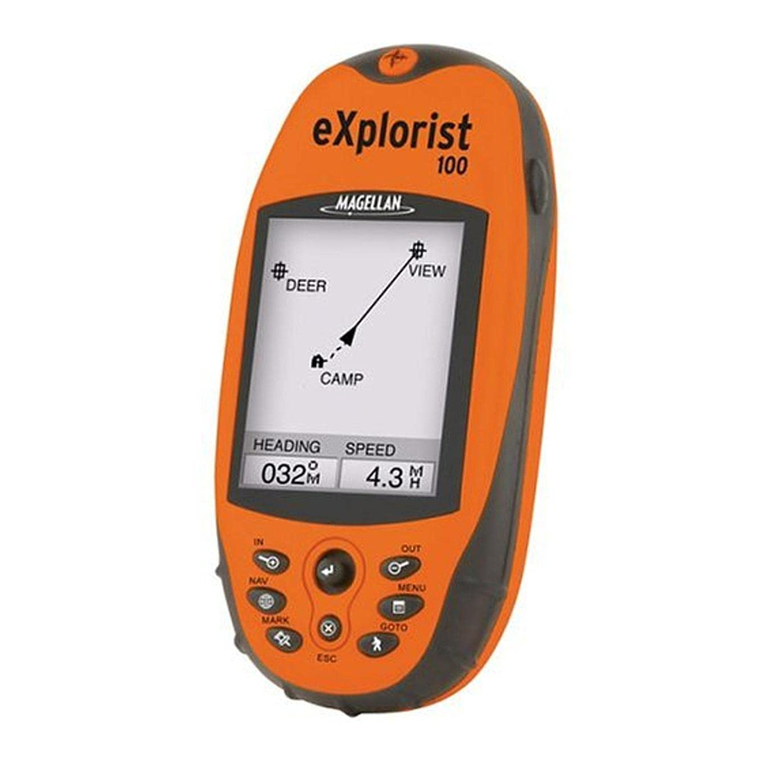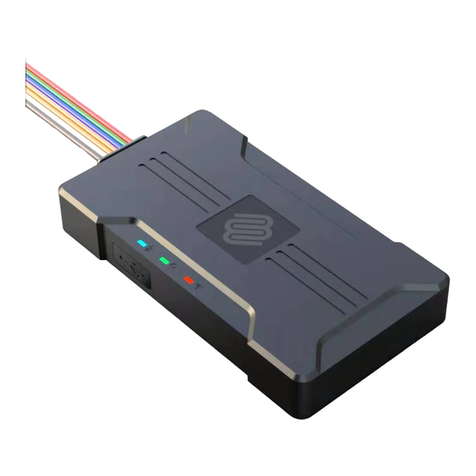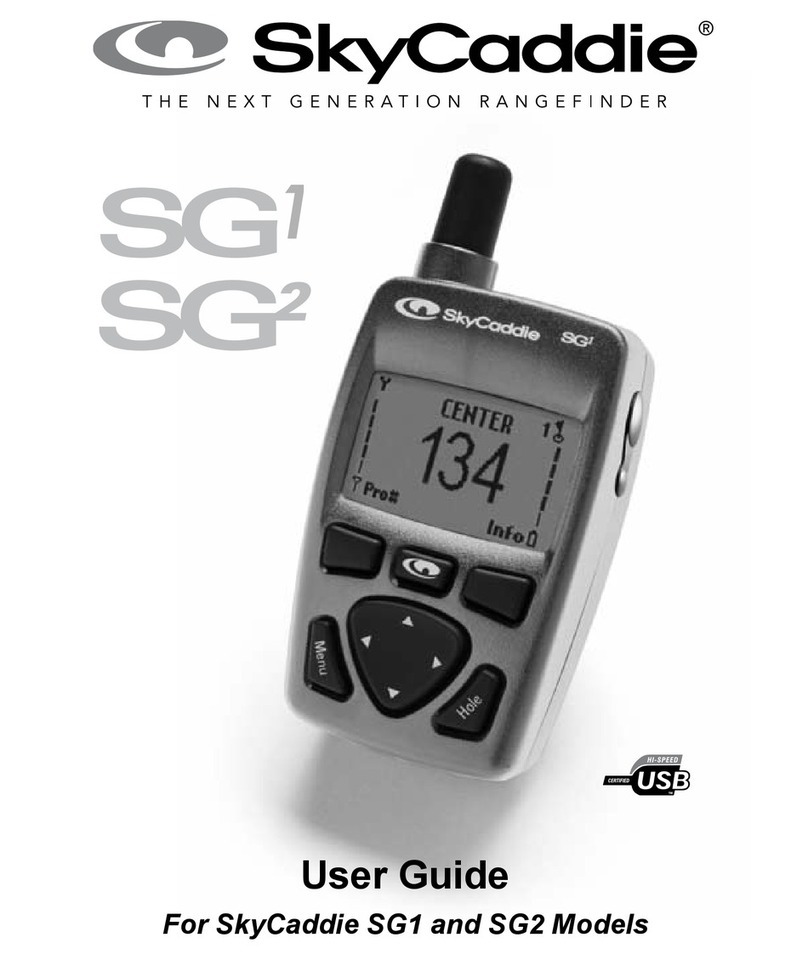1. INSTALLATION
3
1.4 Mounting
1.4.1 Pole/Rail (Pipe) Mount
CAUTION! - Do not use the flush mount materials to mount the unit on a pole. Water may leak
into the unit.
The nut assembly supplied has standard 1-14" UNS threads that can be screwed to a standard
marine antenna mount, extension pole, or rail-mount bracket. Before beginning the installation,
plan for securing the pole/rail bracket to the boat and purchase locally all the necessary hardware.
It may be helpful to fasten the pole/rail bracket to the boat before proceeding.
1. Unscrew the mount base (part C) from the surface bracket (part E). (The surface bracket is
not used in this installation. See the next page for part (E)).
2. Remove the label from the GPS receiver’s socket (underside of receiver). The label may be
discarded.
Fasten the mount base (part C) to the GPS receiver (part A) with the supplied two panhead
screws, flat washers and spring washers. The torque for the screws is 1.35 N m.
3. Decide if you want the cable to exit through the center or along the side of the pole/rail brack-
et. Slide the nut assembly (captive nut and adaptor) onto the cable at the 9-pin GPS connector
end. Do not connect the GPS receiver at this time.
1) Center exit: Pass the instrument connector end of the cable down through the center of
the pole. Be sure to leave several inches of cable extending beyond the nut assembly.
2) Side exit: Place the cable side-exit adaptor (part D) over the cable. Being sure the cable
is passing through the slot in the side, screw the nut assembly onto the adaptor. Hand-
tighten only. Do not over tighten.
Note: Use the adaptor supplied as it has smooth edges that will not chafe the cable. Do
not use a purchased part.
CAUTION: if you use a thread locker, use teflon pipe thread tape. Do not use a liquid thread
locker as it may weaken the plastic, causing it to swell and crack.
4. Screw the extension pole/rail bracket onto the nut assembly/cable side-exit adaptor. Hand-
tighten only. Do not over tighten.
5. Remove the protective cap from the GPS connector on the cable. (Save the cap to protect the
connector, when the receiver is removed.) Plug the cable firmly into the GPS receiver.
6. With the alignment tab on the GPS receiver facing forward, slide the captive nut upward and
screw it onto the mount base. Hand-tighten only. Do not over tighten.
1)
2)
